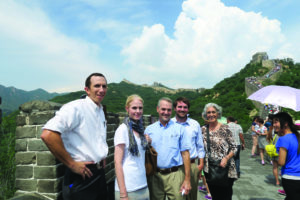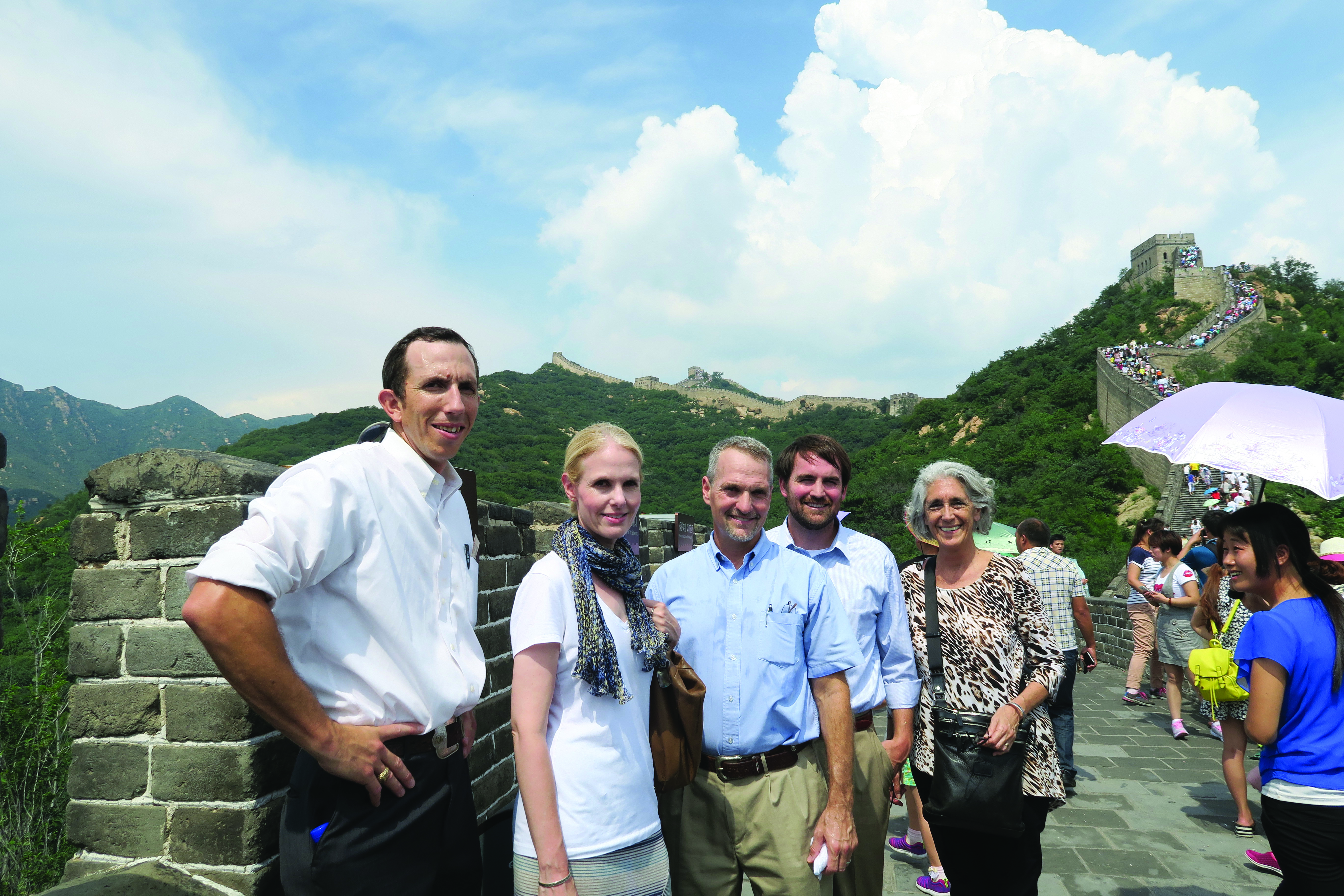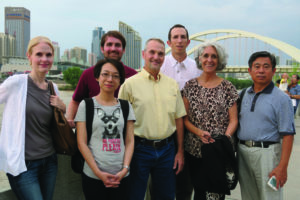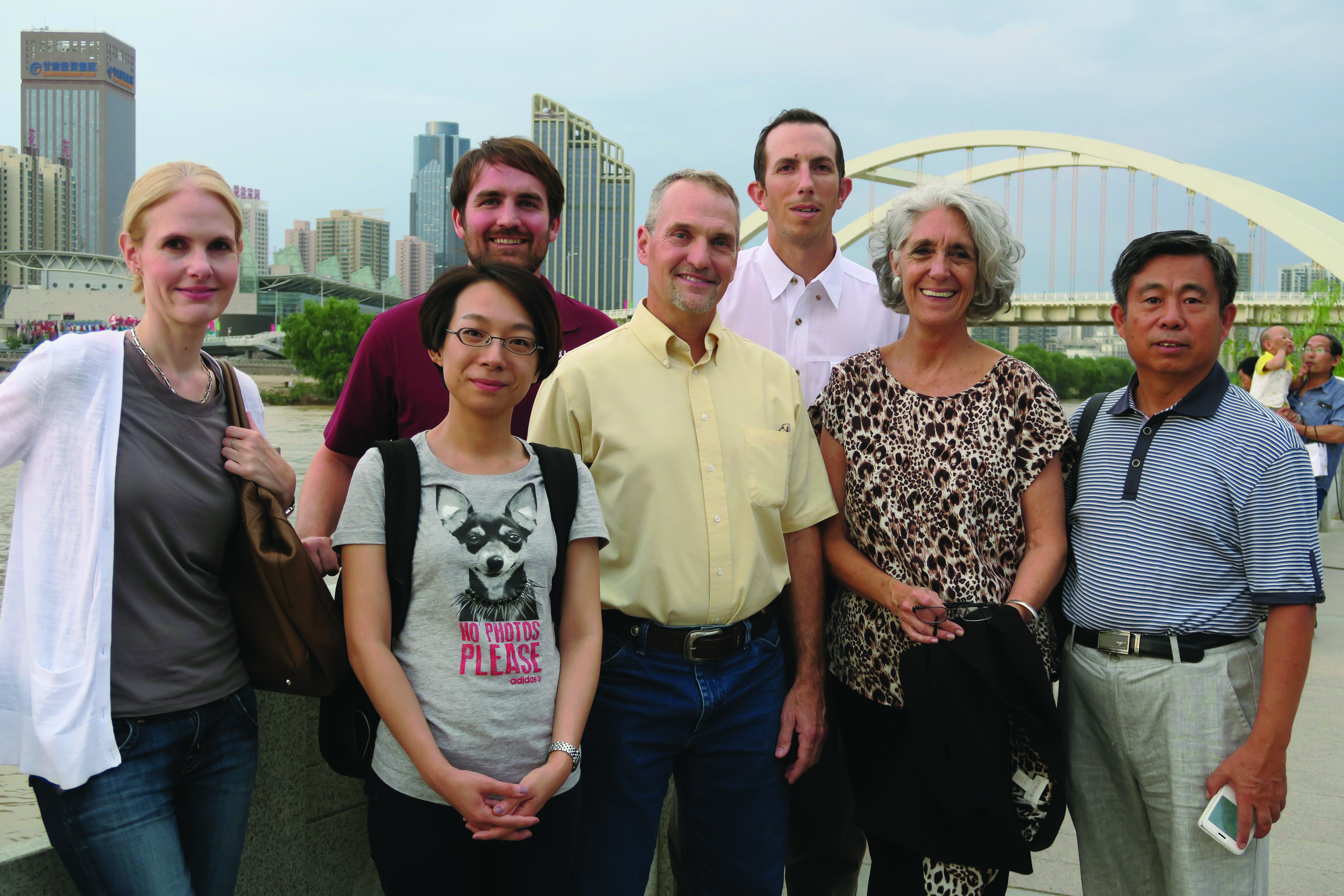Oceans Apart, A World Together: Texas A&M One Health Interdisciplinary Team Visits China

For many across the globe, pork is a vital source of protein. In China, the production and export of pork and pork products have increased as a result of the nation’s growing economy. Swine diseases can cause fluctuations in domestic and international markets for pork and can negatively affect both human and animal health. As a result, there has been increased focus on food safety and the prevention of pathogens entering the food supply.

To begin a discussion about food safety as it relates to pork, faculty members from the Texas A&M; College of Veterinary Medicine & Biomedical Sciences (CVM) and the College of Agriculture and Life Sciences (COALS) travelled to China to participate in a two-week scientific exchange trip in July 2015. The purpose of the trip was to identify future collaborations in the prevention of swine diseases, many of which can be transmitted to humans. This undertaking was an example of the One Health philosophy in action. Texas A&M;’s One Health mission is to find interdisciplinary health solutions by combining expertise from human health, animal health, and environmental health perspectives.
The five Texas A&M; researchers who participated in this U.S.–China Scientific Cooperation Exchange Program, which was supported by the U.S. Department of Agriculture (USDA) and the China Ministry of Agriculture, were Dr. Rosina C. “Tammi” Krecek, a parasitologist and visiting professor at the CVM and interim assistant dean of One Health; Dr. Christine M. Budke, an epidemiologist and associate professor at the CVM; Dr. Clay Ashley, director of the Veterinary Medical Park and chair of the International Program Advisory Committee; Dr. Brandon Dominguez, a swine health specialist and assistant professor at the CVM; and Dr. Chad Paulk, an animal nutritionist and assistant professor at COALS.
Developing the Team
Before coming to Texas A&M;, Ashley lived in China for five years. There he worked in agricultural development in Guizhou, where he encountered farmers raising pigs infected with the pork tapeworm, Taenia solium. This parasite causes neurological disease in humans. Krecek has participated in extensive international research on this tapeworm, and one of her areas of expertise is infectious and parasitic diseases impacting resource-poor communities. Budke also has international experience, including in China, and studies animal diseases transmissible to humans. Dominguez is a swine health specialist and clinical veterinarian with experience in epidemiology. Paulk is a swine nutritionist.
Through exchanging ideas and best practices, the team believes that the relationships established through this exchange will build capacity and expand markets for pork, as well as support the country’s growing agricultural enterprises. There are additional benefits for both countries; this dialogue is leading to a better understanding of opportunities and solutions to swine diseases.
“Swine production has become a big issue in terms of the world’s food supply,” said Budke.
One Health in Action

In China, the group travelled to Beijing, Chengdu (Sichuan Province), and Lanzhou (Gansu Province). Their main objectives were to explore new research collaborations in pork production, swine nutritional issues, zoonotic swine diseases, and pathogen contamination prevention.

The team began their trip in Beijing, visiting the College of Veterinary Medicine at the China Agricultural University, the School of Public Health at Peking University, and the China Center for Disease Control. Scientists, professors, and physicians at the institutions met with the team to share swine disease concerns in both countries and how to translate research into education and outreach.
The group travelled south to the Sichuan Center for Disease Control and the College of Veterinary Medicine at the Sichuan Agricultural University in Chengdu. Both Texas A&M; faculty and their Chinese colleagues presented seminars about their research and educational programs.
At the Lanzhou Veterinary Research Institute in Gansu Province, the team interacted with graduate students and senior institute members. “There we were in the middle of China talking to next-generation scientists who are focused on the future. It was very exciting,” said Krecek.
Travelling from eastern China to western provinces, the team observed different One Health perspectives. In rural regions, the topics discussed concentrated on agricultural production problems, while in other locations swine disease affecting minority groups became the main issue.
Differences between American and Chinese veterinary medicine practice also became apparent while travelling across the region. “The veterinary profession in China is very different than in the United States,” Ashley explained. “In the eastern part of China, where the big cities are, their veterinarians are focused on small animals. Those veterinarians are well trained like western veterinarians, but in less-developed parts of China, veterinarians are perceived to have less technical expertise.”
Future Directions
The visit helped strengthen existing partnerships and establish new ones related to infectious and parasitic diseases and swine nutritional issues. A possible exchange program between Texas A&M; and the China Agricultural University may also lead to advancements in the One Health Initiative. “In the spirit of One Health, future collaborations will not involve only a single person, or even a single discipline,” Budke stated. “We will need to bring together individuals from multiple disciplines in both countries.”


